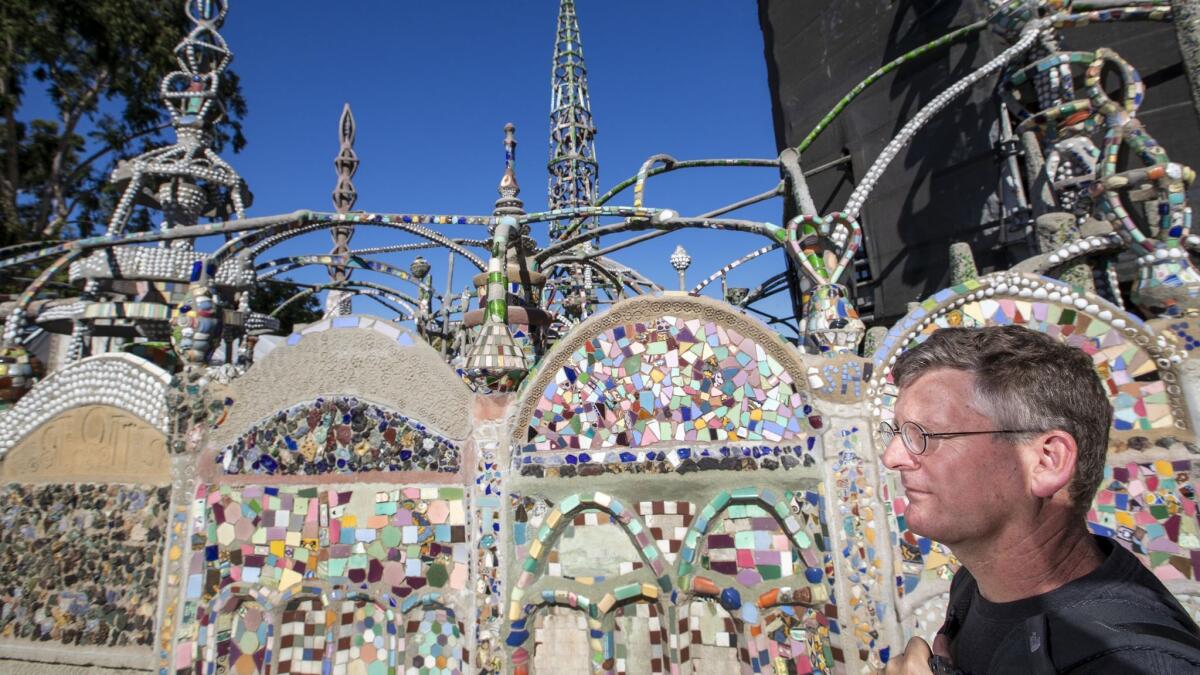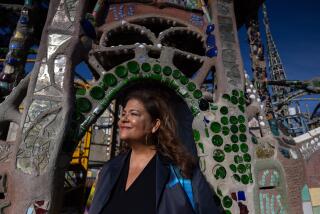One obsession begets another: A biologist yearns to discover the secrets of Watts Towers’ shells
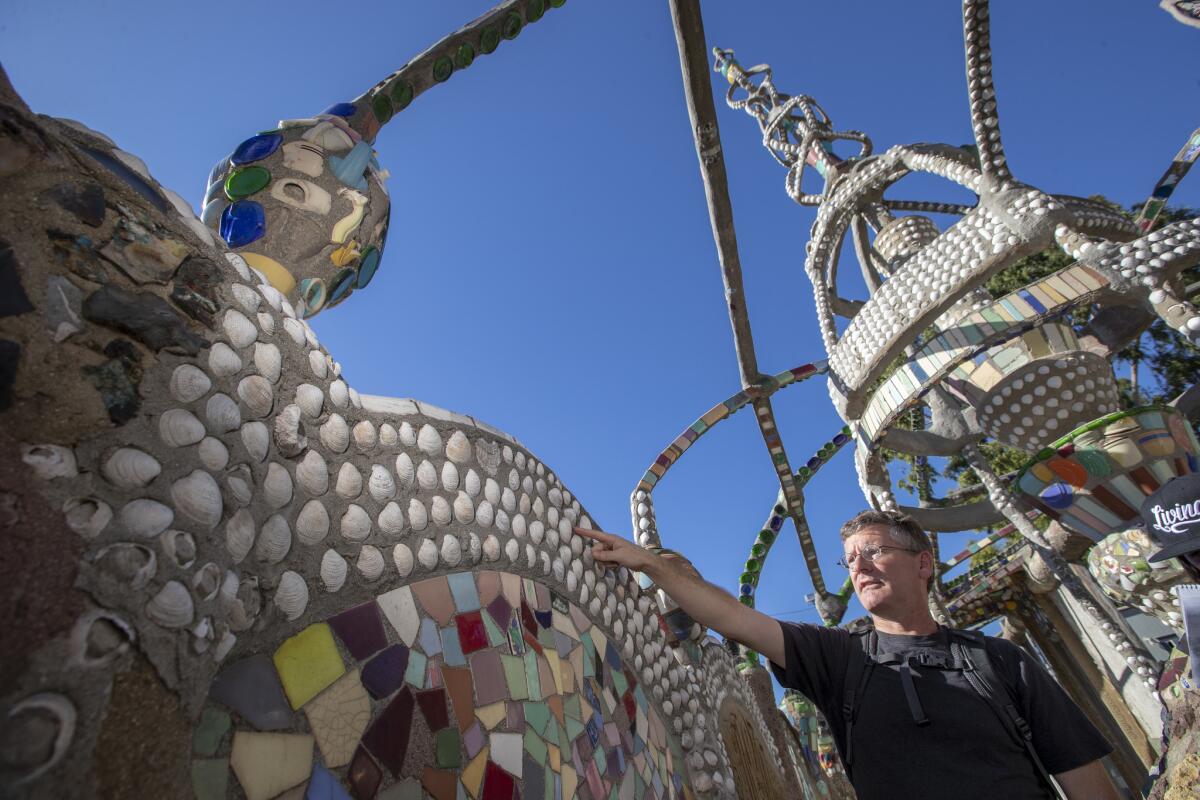
- Share via
Thirteen miles from the coast, marine biologist Bruno Pernet found himself surrounded by concrete, asphalt and an assortment of roughly 10,000 seashells.
There were the iridescent shells of black abalone, the chalky shells of California Venus clams, and the sun-bleached shells of Pismo clams.
None of these specimens had seen the ocean for decades, and some had been on dry land for nearly a century. All of them adorn the Watts Towers, the folk art monument that rises like a DIY cathedral above a neighborhood of modest one-story homes in South Los Angeles.
Pernet spends most of his professional time studying the larval stages of worms and snails that inhabit the Southern California coast. But over the past 10 years, he has channeled some of his scientific expertise into this national historic landmark in pursuit of an unlikely obsession.
His goal is to identify the species and provenance of all the shells on the 17 structures that make up the iconic sculpture. He calls it the Watts Towers Bivalve Inventory Project.
It is an audacious and time-consuming undertaking, but he believes it is scientifically worthwhile.
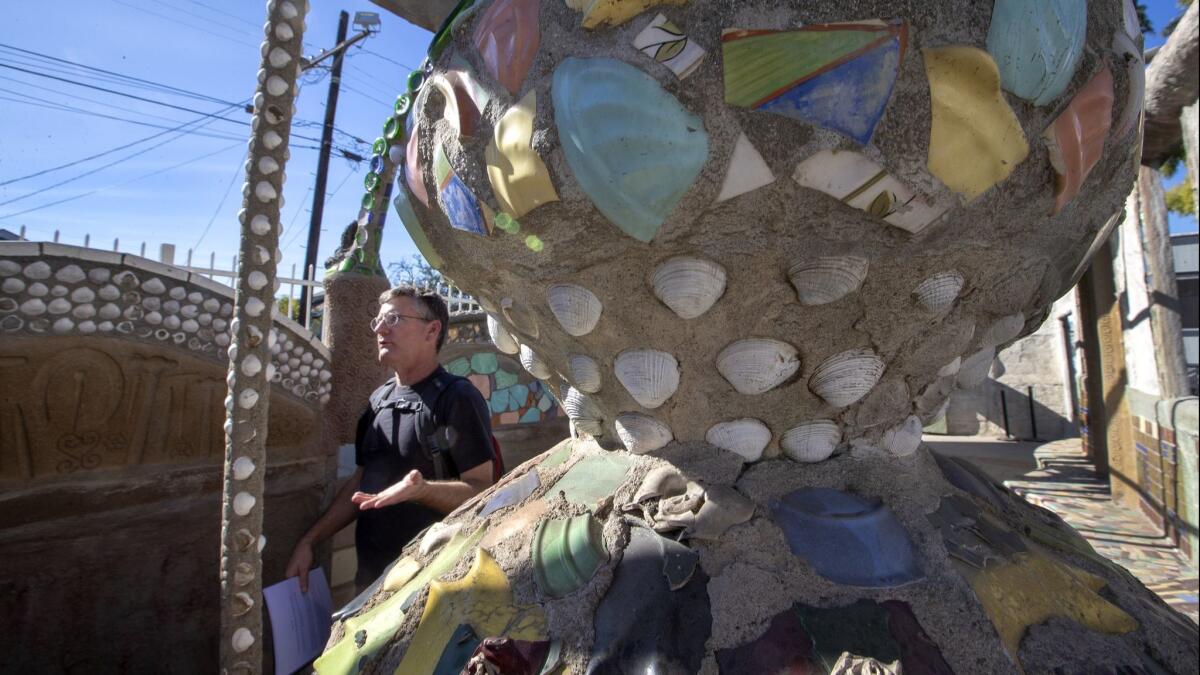
Though the shells were intended as decorative elements, collectively they create a physical record of the clams, snails, mussels, and other mollusks that inhabited the local shoreline over a 30-year period between the 1920s and 1950s, when the towers were being built.
“If this were a museum collection, all the shells would have labels,” Pernet said. “Here, the labels were missing.”
Pernet’s friend and colleague, Christine Whitcraft, said the unusual quest is not as crazy as it might sound.
“Creativity and science are usually juxtaposed to each other,” she said, “but I think good science is done with creative thinking.”
::
The Watts Towers were built by Sabato Rodia, an Italian immigrant who worked a series of odd jobs and had no formal training in art, sculpture or architecture. He purchased a triangle-shaped property on East 107th Street in 1921 and began constructing the towers that year. It took him more than three decades to complete the project, working in his spare time.
Rodia created his sprawling sculpture out of structural steel, chicken wire and mortar. He climbed the towers as if they were monkey bars, and decorated them with a vast array of recycled materials, including glass bottles, broken tiles and shards of mirrors.
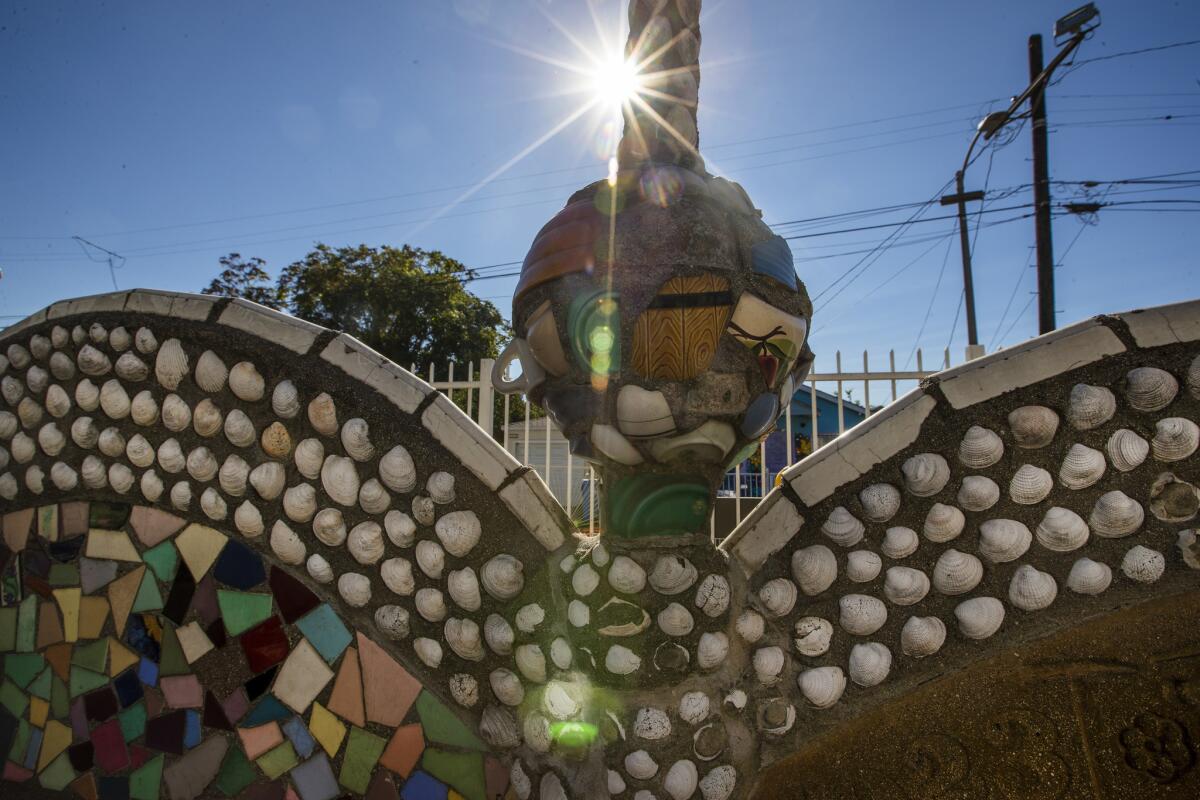
The result is a stunning tour through one man’s boundless creativity.
“When you walk inside, it’s a very spiritual feeling,” said Rosie Lee Hooks, executive director of the Watts Towers Arts Center Campus. “I’ve been here 20 years and I’m still finding surprises. It’s just amazing that one person can do all that by themselves.”
In 1954, Rodia declared his artwork finished, abruptly deeded the property to a neighbor, and moved to Northern California to be closer to family.
He died 10 years later.
Rodia, who stood less than five feet tall, never clearly articulated what drove him to create his magnum opus, which reaches a height of 99.5 feet. He told one interviewer, “I wanted to do something. I wanted to do something big.”
To another he said, “You gotta do something they never got ’em in the world.”
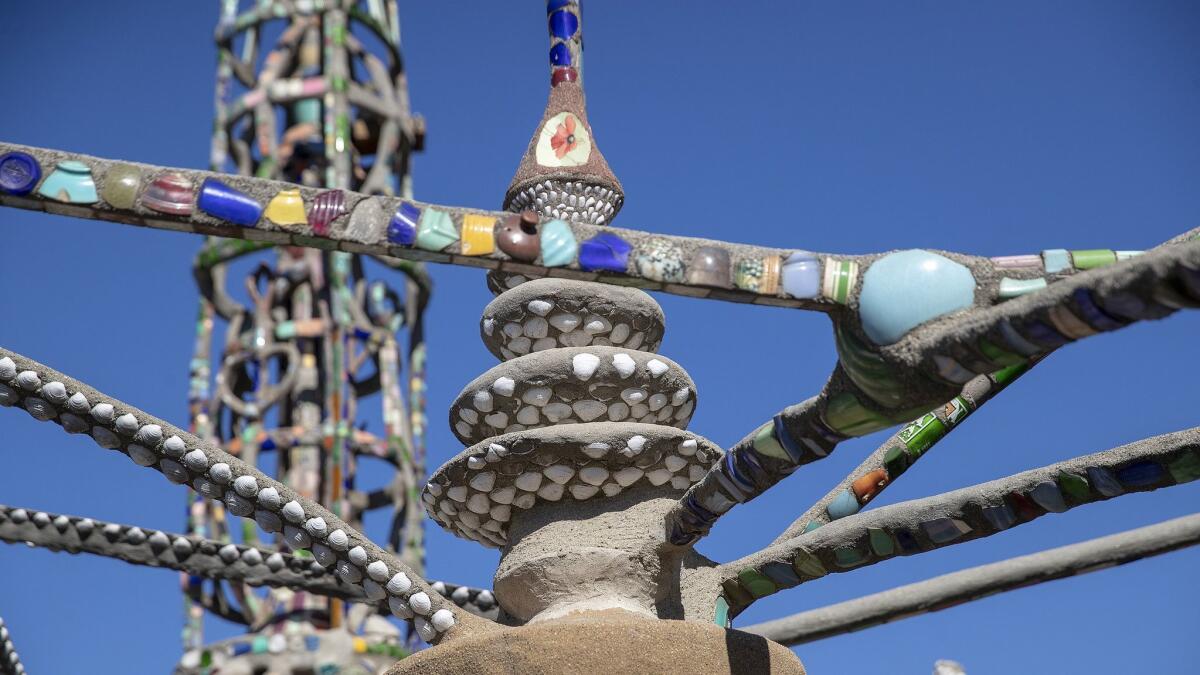
There are no drawing board designs, no recipes for the cement mix he used. When discussing his work on the towers, he had a tendency to change his story depending on his audience and his mood.
“There’s a lot of anecdotal information and history, but it’s hard to know what to believe,” said Mark Gilberg of the Los Angeles County Museum of Art, who is currently managing a three-year restoration of the towers.
::
Pernet first visited Watts Towers in the spring of 2009. At the time he was new to the city, and a friend and fellow biologist had offered to show him around.
“I don’t really remember what else we did,” Pernet said. “Watts Towers sticks out in my mind because I spent such a long time thinking about it afterwards.”
He was transfixed by the shells from the moment he stepped inside the sculpture’s wavy walls. Having just completed a survey of clams in Alamitos Bay, he was primed to notice that the shells were frequently grouped by size, but not necessarily by species.
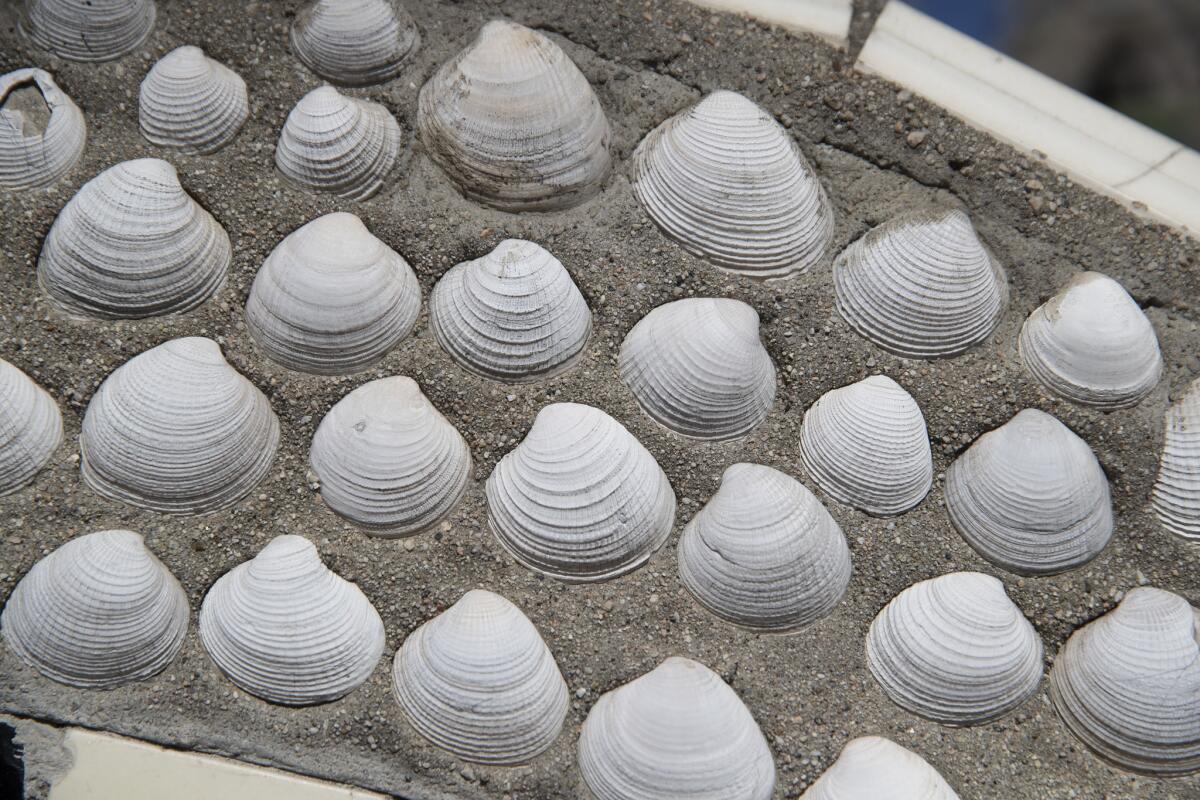
Pernet longed to investigate further, but it would be three years before the Cal State Long Beach professor found the time.
“Identifying all the shells on a giant work of art is interesting, but it’s not going to get you tenure,” he said.
In 2012 he took a sabbatical to work at the University of Hawaii’s Marine Lab in Honolulu, where he learned new techniques to study invertebrate embryos. He returned to the mainland a few weeks before he was due back on the Long Beach campus.
At last, he could turn his attention to his passion project.
He reached out to the Watts Towers conservation team and got permission to wander freely among the towers weekdays between 9 and 5. (Generally, the public may access the site only through a free guided tour.)
Then he sent a note to Paul Valentich-Scott, a curator at the Santa Barbara Museum of History and author of two comprehensive tomes on the bivalves of the western United States.
“I definitely need a clam expert to help me solidify my identifications, and you are the obvious person, for sure!” Pernet wrote.
Valentich-Scott was on board.
“It was way out of left field, but I love new challenges,” he said recently. “My feeling was, ‘Why not?’”
Pernet began identifying shells in the various regions of the towers. When he got stumped, he sent photos to Valentich-Scott.
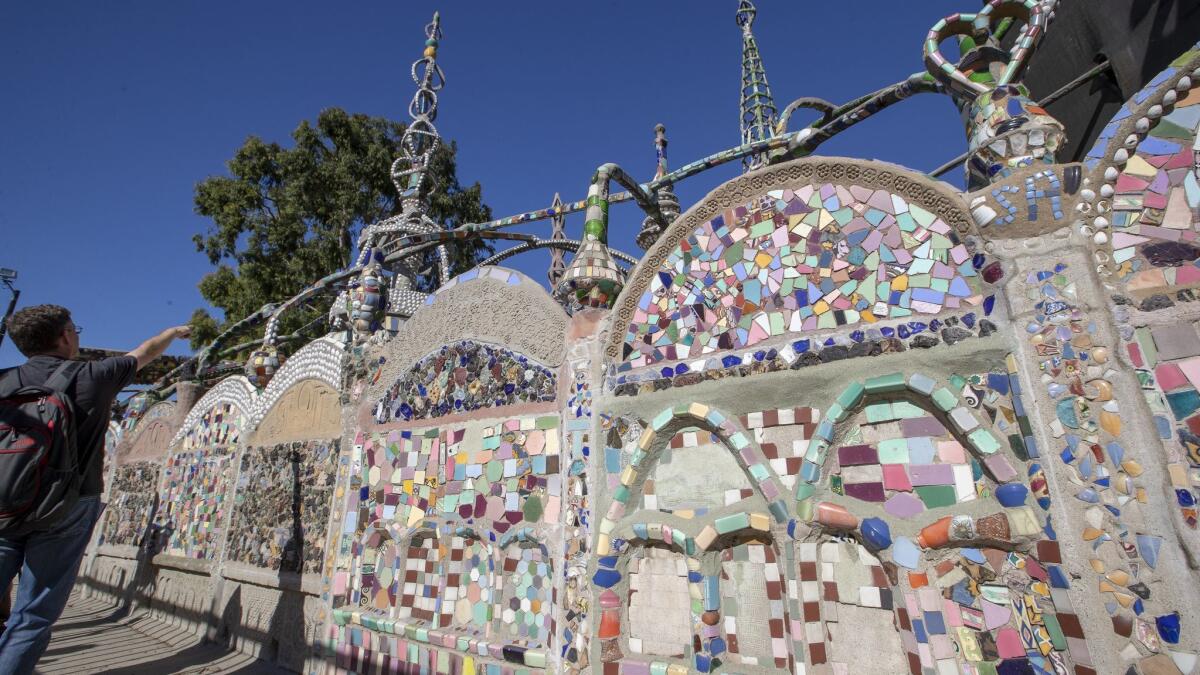
To organize his research, Pernet used a schematic map that broke Rodia’s sculpture into nearly 100 discrete sections. He tackled a few sections a day, documenting all the species of shells he observed.
In some ways it was similar to his more traditional fieldwork — identifying species in the coastal mudflats of Southern California, gauging their abundance, and keeping detailed notes of where each specimen was found. But cataloging creatures in a marine ecosystem is more straightforward than taking an inventory of Rodia’s creation, Pernet said.
On a mudflat he can create a simple square grid, label the sections and record the animal species found in each one. The towers, on the other hand, are rambling and unwieldy. Built free-form from Rodia’s imagination, they don’t lend themselves to easy categorizations or boundaries.
Pernet was able to identify many of the most common shells by sight, taking into consideration the size and shape of the shell, and what biologists call shell sculpture.
“There are all kinds of raised parts of a shell — some that run parallel to the edge, others that are perpendicular,” he said. “We can use all of those things to identify it.”
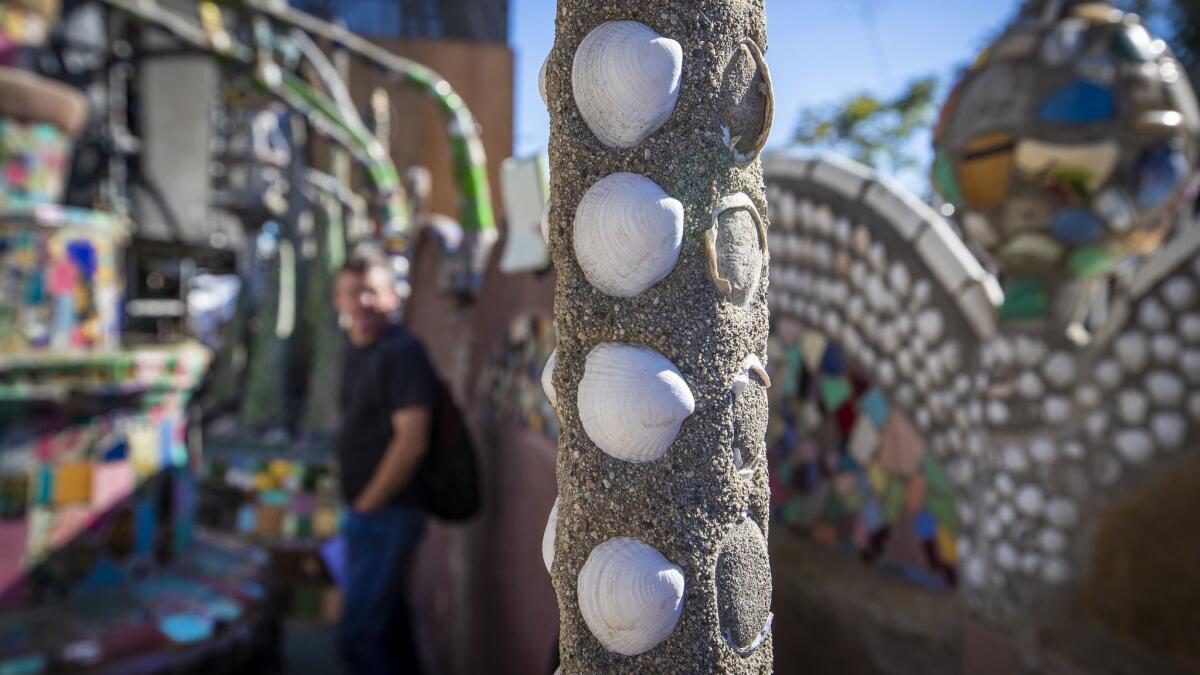
What they couldn’t use was the interior of the shells, which were stuck in the cement.
“The outside only gives you part of the story,” Valentich-Scott said. “There are a lot of structures inside a shell that help a ton with identification.”
For instance, there may be teeth along the top interior edge of a shell that hint at how the animal once attached itself. There may also be indications of the shape of the muscles it used to keep the shell closed.
Pernet had hoped to find some historical information about where Rodia collected the estimated 10,000 shells that adorn the towers, but records were hard to come by.
The most direct lead he found was in a 1962 letter written by the historian Claudio Segre. According to Segre, Rodia said he picked up the shells while walking along the shore from San Pedro to Long Beach with an old cement sack on his back.
In the end, Pernet and Valentich-Scott identified 34 species embedded in the towers — 24 bivalves and 10 snails. They also determined that Rodia likely did find most of the shells on local beaches because 29 of the species were native to Southern California. (The other five were from Northern California and Florida; how Rodia obtained them isn’t clear.)
Many of the the shells that were common on local beaches in Rodia’s day — including the California Venus clam and black abalone — have since disappeared from the coastline, driven away by disease or by invasive species that replaced them.
“If he was building this today, it would be really different,” Pernet said.
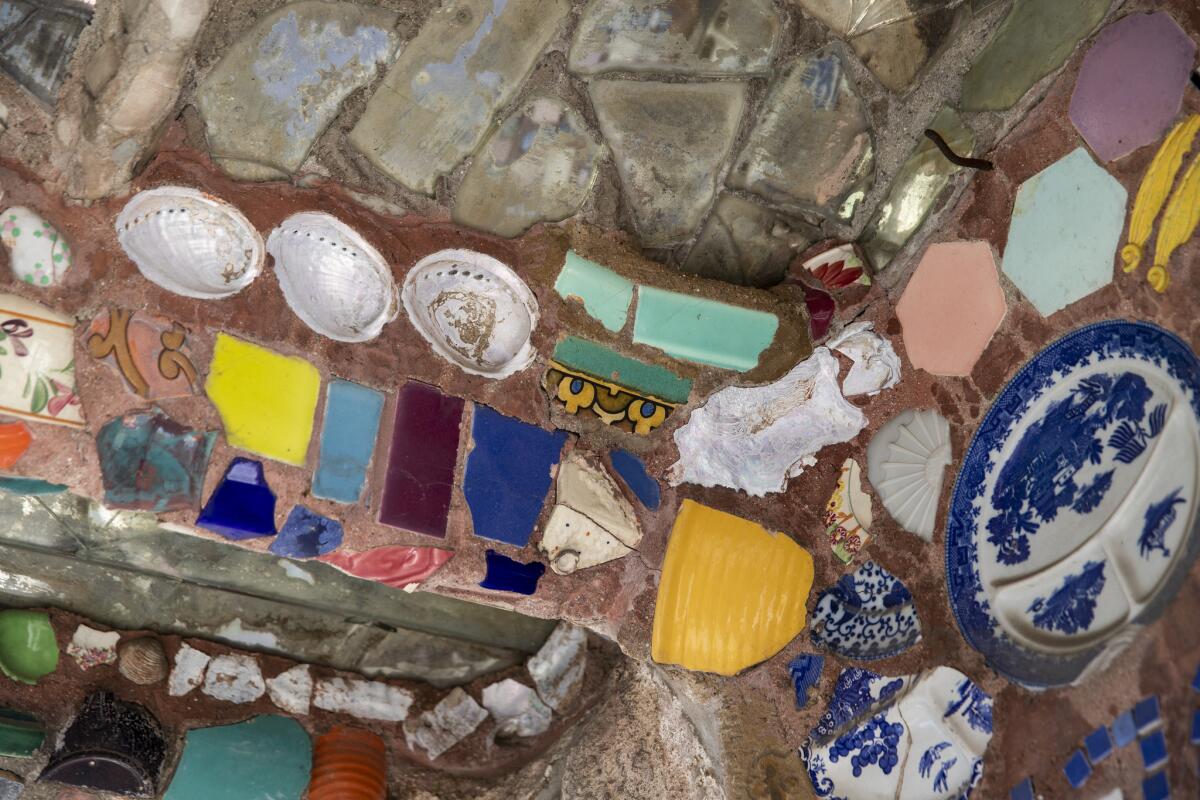
Pernet has classified most of the shells on the towers, and he said he’s come to terms with the fact that he won’t be able to identify each and every one.
Shells are among the most vulnerable materials used on the towers, said Gilberg, the conservationist. If you look closely, you’ll find many instances where all that remains is the edge of a shell, or even worse, just the ghost of its impression in the cement.
“The shells turn to dust over time,” Gilberg said. “This work gives us more information about what was there.”
The conservation team is currently focused on repairing cracks in the three tallest towers. In the future, Pernet’s work could help the team decide which shells should replace the ones that have broken or disappeared.
The results of Pernet’s project appeared this month in the Journal of Conservation and Museum Studies. The research paper also includes a link to a downloadable pictorial guide to the shells of the Watts Towers.
While the publication is nice, he said the real inspiration for the work was to satisfy his curiosity.
“It just seemed like a cool question to answer,” he said.
